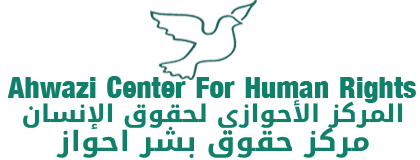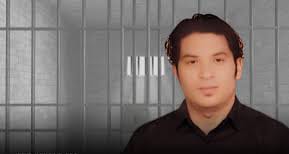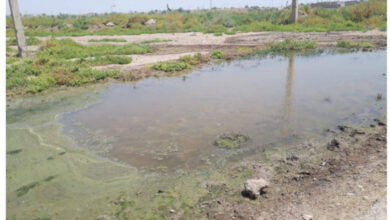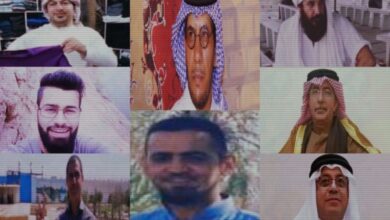COVID-19 situation in Ahwaz
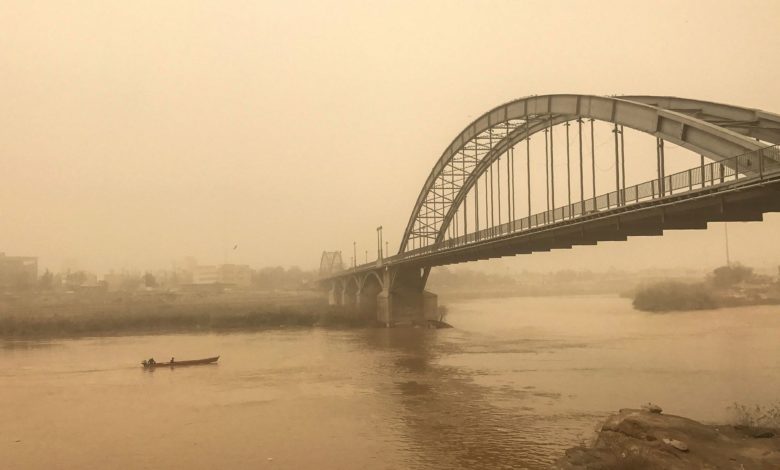
The COVID-19 respects no national boundaries, social bounds, political systems or cultural values. It sneaks up on the world and sucker punches it without warming, becoming the great equalize. As we cannot control what happens nor how the best use of our time is on developing an effective and timely response.
For almost three months, the Coronavirus has been ravaging thousands of people around the world. In every country, most hospital beds are occupied by the infected. Particularly in Spain and Italy, the spread of the contagion has been so devastating that more deceased bodies can be found on the streets awaiting burial than living ones in the hospitals awaiting a cure.
Thanks to the free media and democratic systems of governance in the two countries, the rest of the world learned about these tragic developments in Italy and Spain and learned about the high numbers of the affected. Due to the unique and novel challenges presented by the ongoing disastrous situation, multiple humanitarian organizations around the world altered their responses and redirected their resources into fighting the pandemic. For instance, Doctors Without Borders has been sending trained staff and medical equipment to provide humanitarian support and medical aid to the affected regions.
The situation not only in Ahwaz (the South part of the Ilam , Khuzestan Bushehr and Hormozgan provinces on the Iranian map) but all over the areas populated by non-Persian nations, is extremely alarming. Despite the daily declarations of numbers and percentages of the infected people throughout Iran, exact numbers are only speculative due to the efforts to suppress the accurate information by the regime and due to lack of testing. The resulting uncertainty is even more worrying and terrifying to all of the diverse demographics of Iran.
Thanks to the testimonies and clandestine footage of secret burials to the satellite images of mass graves situated far away from Iranian cities, to the testimonials of hidden burials in several shrines in different parts of the country, we now know that the number of the people infected by COVID19 is doubling in no more than 24 hours, rather than in weeks or months. The number of the deceased is also growing exponentially.
Although the Iranian president Hassan Rouhani has stated at the beginning of the disaster that the “the situation is going to be straight forward and people can easily navigate from Saturday, according to the “Khuzestan” governor Shariati, a regime loyalist known for his vast human rights abuses, said that “ it is unbelievable that the number of Ahwazi people that been affected by COVID-19 has been increased by 50% within 72 hours from 200k to 300k”. Shariati’s admission complete undermines the credibility of all the statistics and figures published by the Iranian regime officials and by the state media.
From its starting point in the city of Qom, and as the infection spread throughout Iran, the Ahwazi environment remained mostly ignorant of the scale of the pandemic. However, rumors that “high temperatures can kill the virus”, created a frightening climate and shocked many Ahwazis because the region has typically sunny weather. As a result, Ahwaz witnessed the mass migration of clergy and Khomeinist fundamentalists from Qom.
However, the story does not end there. Due to the decision to lock down all major cities by the regime, the Ahwazi region faced mass migration from all parts of the country through its northern borders, with the willful oversight by the Iranian officials and facilitation of entry by the police.
The civilian and sectarian delegations flocking in from the disproportionally affected Iranian cities, such as Qom, are still considered the central factor in the spread of the dangerous virus throughout Ahwazi cities.
The second concerning factor is the fragility of the health system in Ahwaz and the failure of the Iranian regime to provide the Ahwazi people with the means of sterilizing and disinfecting affected areas, as well as with other essential medical necessities and tools to confront COVID-19.
Ahwazi people responses to COVID-19
In the early stages of the pandemic, the regime denied the spread of the Coronavirus into Iran. Later, the regime officials claimed that there are very few cases present and attributed the rumors of growing numbers to propaganda amplified by the “enemy”, supposedly to discourage the people from participating in parliamentary elections and celebrations of the anniversary of the revolution.
When the scale of the outbreak became impossible to hid, the regime attributed the pandemic to American-Israeli biological warfare against Iran.
When the regime recognized that these excuses are easily dismissed even by the domestic public, they finally admitted that the pandemic is a global crisis and demanded a $5 billion loan from the International Monetary Fund.
These contradictions by the regime made clear to the Ahwazi public that the regime is impotent and unable to fulfil its commitments and obligations in ensuring the safety of the defenceless population in containing the virus. As a result, Ahwazi activists started forming local grassroots committees to assist the impoverished portions of the Ahwazi areas.
These committees are ad hoc and random, popping up arbitrarily in different parts of the region, wherever young Ahwazis decide to take matters into their own hands.
In the past, such committees helped Ahwazi farmers affected by the floods, which took place between January and April 2019. At the time, the Iranian regime not only failed to protect the Ahwazis from the floods, the results of negligence, poor infrastructure, and intentional diversion of the water away from the oil rigs rented to the Chinese clients and into local farmlands, but the Iranian intelligence agencies arrested almost all of the young activists taking part in these committees.
Videos received from different parts o Ahwaz clearly showed that these ad hoc grassroots committees with minimal medical equipment and resources have already started their work to sterilise the streets of the Ahwazi capital in order to prevent the outbreak from spreading further among the locals.
https://www.youtube.com/watch?v=KU55h796cAs
The most dangerous aspect of the situation is the fact that n the hospital in-charges had given the orders to dispose of the infectious waste from the
“Imam (Khomeini)” hospital into an open environment, dumping it near and into the Karoon river bank.
According to the General Director of “Khuzestan” environmental department, the hospital emptied six tonnes of infectious waste into that area, which no one ever cleaned up. While searching for evidence among the waste, Ahwazi activists found papers which included the hospital’s correspondence with other Iranian departments.
Following strict instructions issued by the security service, the Iranian hospital had transferred the corpses of the deceased people with the Coronavirus from other Iranian cities to the villages of the Al-Rashid in the city of “Al-Amidiya” (“Omidieyeh” in Persian) in Ahwaz for burial in the lands belonged to Ahwazi farmers.
Not only has the regime not helped the Ahwazi people to handle and to contain the pandemic, but it has, in fact, increased the scope of the disaster unleashed upon the Ahwazi population by importing corpses infected by the virus.
Methanol consumption and prisons
Dozens of young Ahwazi people died, and more than five hundred had fallen ill after consuming methanol, prompted by Iranian media disinformation that alcohol could prevent or cure the spread of the Coronavirus.
Before these rumours started, according to the eyewitnesses in Ahwaz, some IRGC personnel in plainclothes had distributed over 20 litres of methanol to the Ahwazi methanol vendors. Allegedly, the IRGC was doing so in other non-Persian regions as well, but Ahwaz was apparently the most affected. Affected by poverty, lacking accurate information about the illness, often illiterate, Ahwazis were susceptible to the disinformation campaign. They soon rushed to get the high proof methanol to be consumed for prophylactic purposes or to off-set the symptoms of the virus.
Several Iranian TV stations covered this incident, including the documented reports enumerating the Ahwazis who died, were blinded or would be suffering from kidney failure for the rest of their lives. One of the reporters, while counting the number of those who died due to the consumption of methanol – nine in that location – emphasised that one of the deceased was a woman but failed to explain the causes behind this tragedy.
Furthermore, the reporter did not mention that the regime used up all the funding that should have gone towards containment of the outbreak and providing accurate information about safety precautions to all parts of the country, had embezzled over a billion dollars worth of public money and spent it all on bloody sectarian expansionist agenda, advancing the Khomeinist and IRGC hegemonic and terrorist ambitions.
Thanks to the corruption and Iran’s adventurism, today the regime is unable to provide medical masks even to the medical staff in Iran.
Because it is routine for the Iranian authorities to deny any wrongdoings, and to deny any contribution to the spread of the infection, one Ahwazi activist recorded a film set in the
Ahwazi capital “Imam Khomeini” hospital, where he stated that
“ almost 350 people have been killed by ingesting methanol, and another 300 persons are in a severe health condition.”
Although the Iranian officials had acquiesced to the release of thousands of inmates from prison due to Corona outbreak, these commitments did not extend to any Ahwazi prisoners thus far, even political prisoners. Although all representatives of the various Iranian demographic groups, faced with COVID-19 pandemic, had been released at least into house arrest, or temporarily let out on bail, none of the
150 Ahwazi political prisoners in ward 5 and 250 prisoners of conscience
in ward 8 in Ahwaz “Sheyban” prison had been released. All of them remain in custody in unsanitary conditions.
Ahwazi political prisoners in exile in other Iranian cities likewise remain incarcerated.
In response to the increasingly dangerous situations in prisons, the Ahwazi Centre for Human rights published a report about the worsening conditions of the Ahwazi prisoners in Iranian prisons. Still, the Iranian regime did not react and did not release the Ahwazi inmates.
An Ahwazi prisoner named Mehdi (also known as Milad) Bahri, a well-known Ahwazi photographer who documented the devastating effects of the deliberate flooding in 2019 on the Ahwazi population had been imprisoned for exposing the tragedy, after being taken into custody the Iranian intelligence service. Mehdi has now been infected by the Coronavirus, and the regime refuses to grant him a humanitarian release or even a temporary medical holiday.
The writer of this report has communicated with one of the recently released prisoners, who said:
“ the Ahwazi prisoners due to lack of information provided to them are getting more worried about their wellbeing and the concerns and stress of getting COVID-19 upsetting the prisoners more than the Corona pandemic itself.”
“Some of the prisoners are intending in the coming days to write a letter to prison’s responsible officials to aware them of their decision about committing suicide due to mental pressure they suffer from the pandemic.” The prisoner added.
“Mr Rahman Asakereh in Quchan prison and Mr Mohamad Ali Amouri in Sheyban prison are in severe health condition, and the Iranian with a background of racism are not permitting them on leave,” the prisoner continued.
New York-based human rights lawyer Irina Tsukerman added: ” Not only has the regime shown extreme negligence and brutality in ignoring the humanitarian disaster in Ahwaz and being completely unresponsive to the needs of the local Arab population out of bigotry and interest in depopulating their oil-rich lands, but Tehran has further demonstrated its illegitimacy in engaging in blatantly discriminatory treatments of prisoners, which will surely lead to the spread of the deadly virus across the prison and into the region, causing easily avoidable suffering and more deaths to everyone in the country. Worse than that, the regime is apparently engaging in murderous tactics through its terrorist arm – the IRGC – by deliberately spreading dangerous substances in the impoverished, illiterate, and desperate regions, including in particular Ahwazi lands, and uses the media to disinform and deceive frightened people into destroying themselves unwittingly. It should be obvious by now, that far be it from protecting itself from some mythical terrorists and separatists, the regime itself engages in the worst of terrorist tactics and wages warfare on the civilian population it is supposed to protect. While there is no home for the brutal, corrupt regime officials and fanatical ayatollahs to change or reform in any way, the international community has an obligation to provide whatever assistance is possible to the innocent people marginalized strategically by the authorities. While the regime refused humanitarian aid from the United States and Doctors Without Borders, other NGOs should work with Ahwazi organizations abroad to provide accurate information, precautions, and if at all possible basic medical necessities to the affected families. They can also be helpful by providing instruction and advice to the young people organizing grassroots activities to help their communities. Ahwazi activists get arrested, tortured, and forced into confessing aid from imaginary foreign enemies regardless of what they do. Given the ever-expanding scope of this massive tragedy, increasing in scale due to the illegitimate actions of the regime determined to turn the natural pandemic into a man-made atrocity against Ahwazis, at the very least international experts and humanitarians can provide some useful basic skills that at least could help or improve some lives, even if they cannot directly affect the political situation.”
Report by:
Faisal Maramazi
Executive Director of Ahwazi Centre for Human Right
Rahim Hamid, a freelance journalist and human rights advocate. You can follow him on his twitter account: https://twitter.com/samireza42
